Events
Posted By:
Irina Lee
Thursday 11 November 2010
Marian Bantjes presented her work and her new book I Wonder at the AIGA/NY Marian Bantjes: I Wonder event held on November 1, 2010 at the F.I.T. Haft Auditorium. She talked about past work, discussed her process in writing the book, and showed several time-lapse videos from creating the artwork. Paula Scher introduced Marian Bantjes.
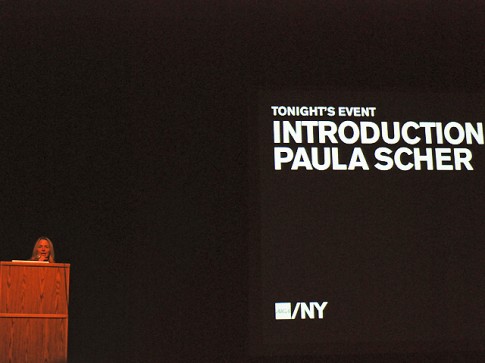
“I first learned about [Marian Bantjes] when I read about her on Speak Up. I thought she wrote some pretty smart things. But then suddenly I started getting her work: sometimes it would be in the mail, like a Valentine, or someone would bring it over and show it to me. I got to realize that this was an amazing talent,” said Paula Scher.
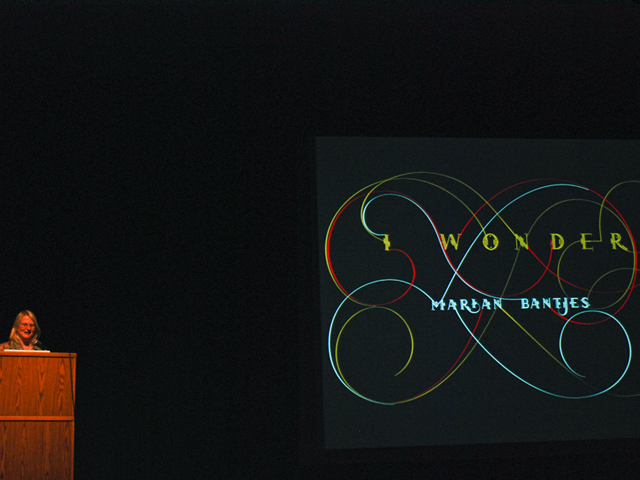
After the introduction, Marian Bantjes took the stage and began her talk with her best-known work, notably for Saks Fifth Avenue. She also showed a series of billboards in sugar for Stefan Sagmeister, her work for AIGA events and fundraisers, New York Magazine, and other New York based publications.
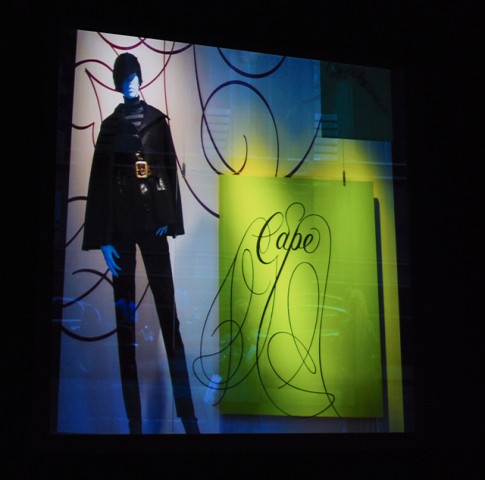
Marian Bantjes grew up in a province of Saskatchewan, in the middle of Canada. She described her pace as a lot slower and her life as a lot quieter, when compared to the bustle of New York.
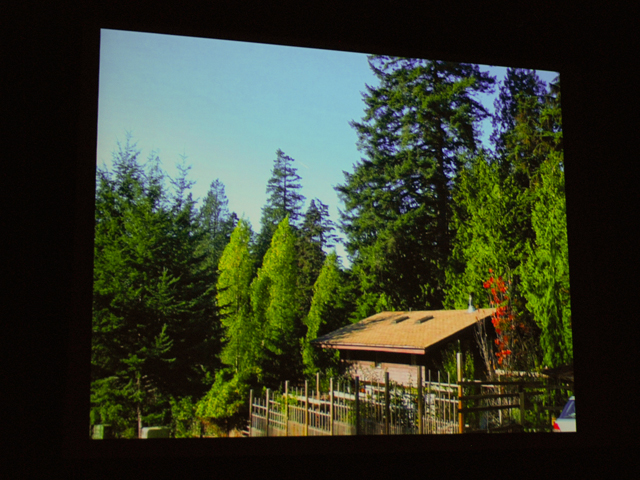
“When I come to New York I feel like the little town mouse coming to visit the city mouse. I never seem to know the right thing to wear, right thing to act. I feel sort of like this, like a child,” she said as she showed a self-portrait she drew when she was 7 years old.
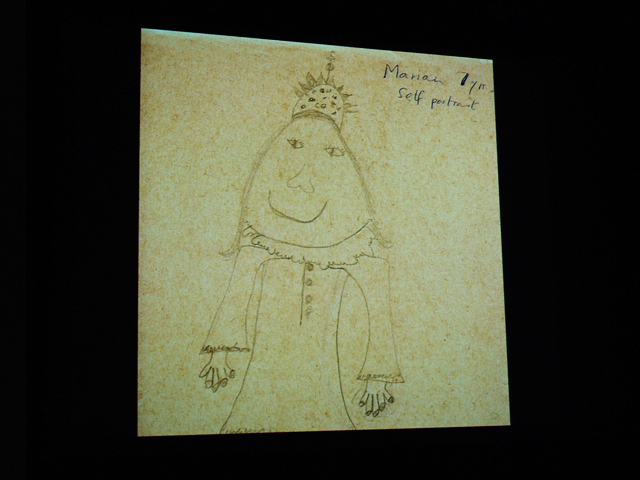
Beginning her career as a book typesetter honed Marian’s attention to order, detail, grid and visual alignment. Marian described her work as organic yet structured, sentimental yet rational—where this juxtaposition is the surprise. As an example, she showed her work for Wallpaper magazine, where she was asked to design a sailboat. “What would be more appropriate than to work with the flowing forms of wind and water? But I’m not interested in the obvious. So I made something that looked like it would never float or sail,” she said.
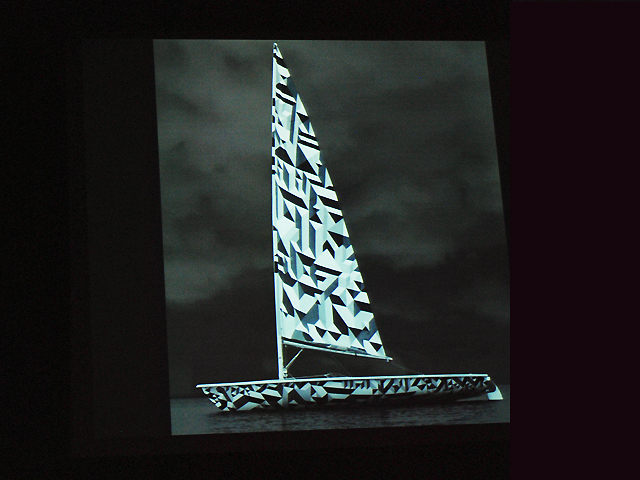
Next, she talked about her book, I Wonder. The idea came from illuminated manuscripts. Thinking about the beautiful and complex, structured and sensible illuminated manuscripts, Marian questioned their form, and started to look at other religions.
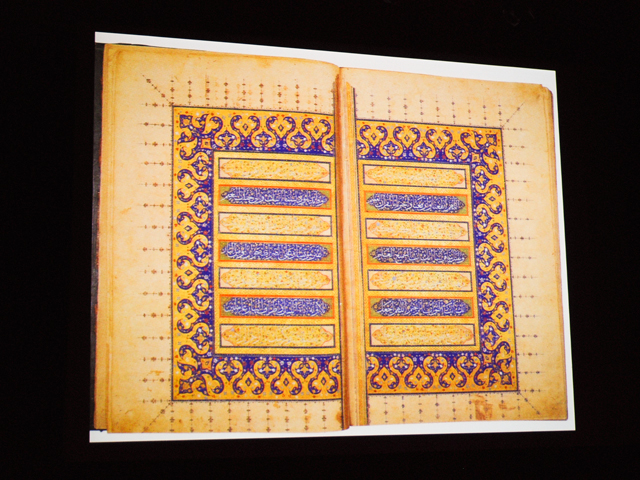
She researched the ornate and complex manuscripts from Islam, Buddhism, Hinduism, and found that ornament and detail were an integral part of the graphic representation of that religion. (However, as an interesting aside, Christianity was the only religion that left ornamentation in the past.)
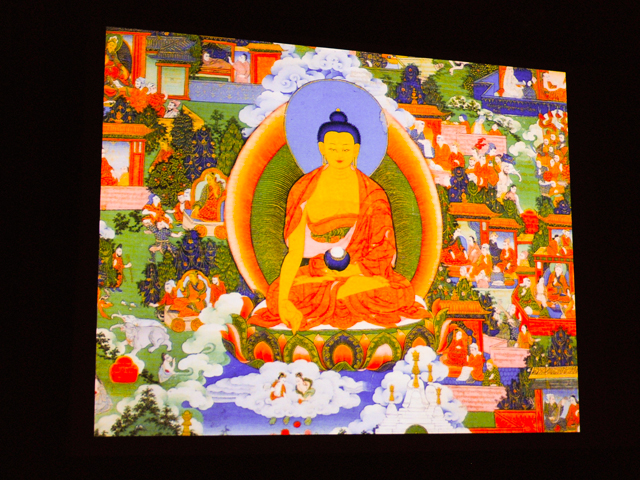
She concluded that detail and ornament elicited a response because wonder was at the heart of it.
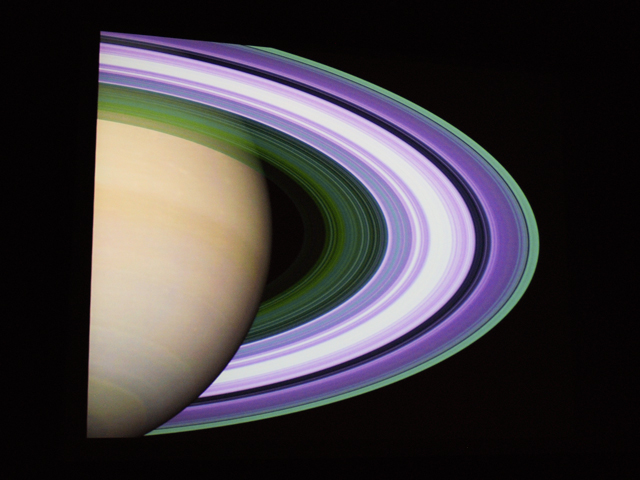
Marian defined wonder as “a feeling that something is so magnificent that you can’t quite understand how it can be,” she further explained, “you may feel this when you look at the night sky. Your knowledge and logic tell you that the stars are hundreds of light-years away, yet you have no understanding of that at all.”
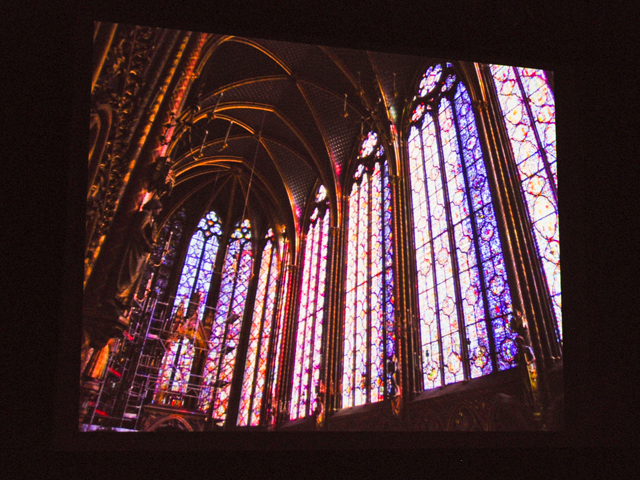
Marian talked about wonder in her work, “I’m often asked how long does it take to make it. People are so used to graphics of visual simplicity that the complexity amazes them.” Her best work has a sense of wonder that draws people in “in exactly the same way that the ornamentalism of religious work is designed to draw people in. We have much more admiration for things that are made by hand, than by machine,” she said.
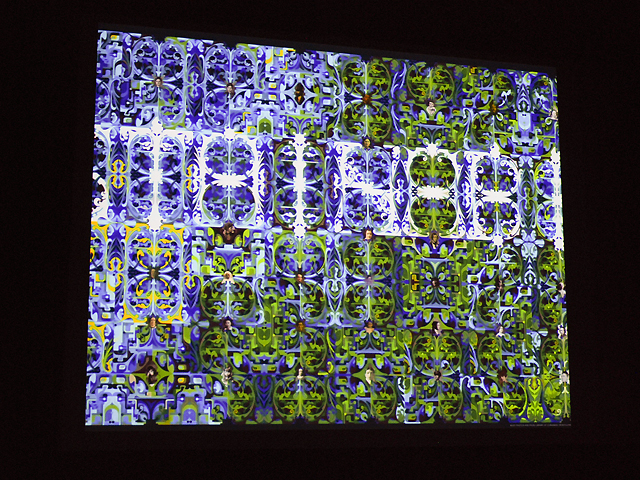
Being a writer for Speak Up from 2004-2006, Marian used a few carefully selected articles which she deemed as having “a life outside of the internet” as content for her book.
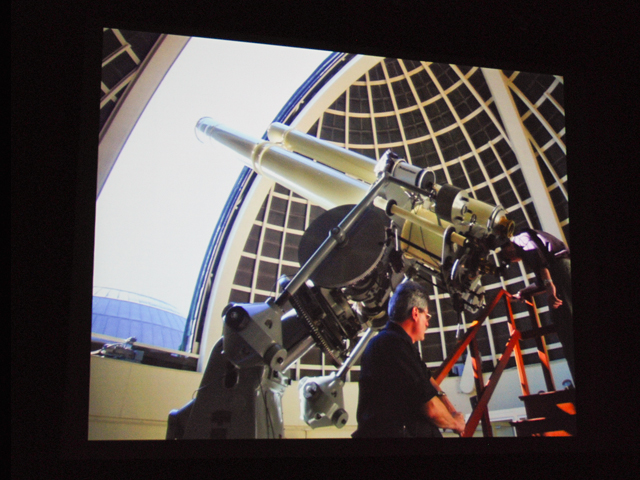
The first article was from a trip to the Griffith Observatory in Los Angeles. Marian focused on a permanent exhibition of a jewelry that represented the timeline of the universe starting with big bang, where each jewelry piece represented celestial objects.
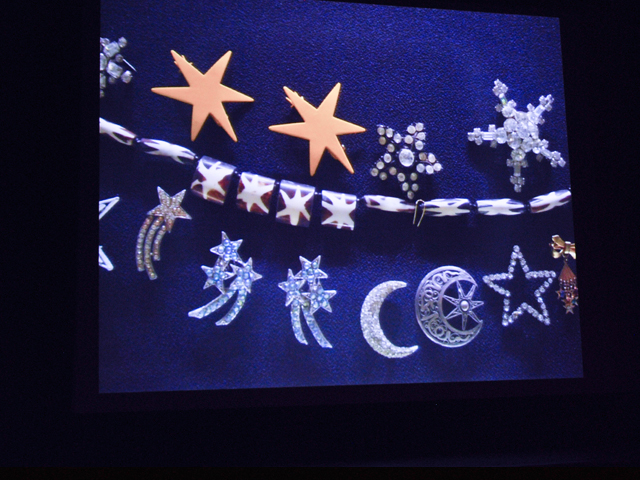
The article was about looking through the telescope and seeing the jewelry as stars, starbursts, comets, asteroids, star berets and planetary bracelets in a strange mixture of facts and fiction.
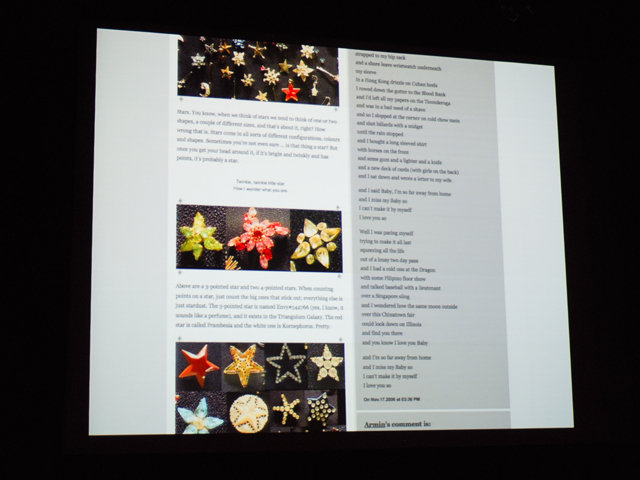
While the blog article conformed to a “Figure A” approach where the text and image are separated, the incarnated piece in book form allowed the text and image to integrate as a whole. Marian explained, “the text is set in pointy serif, printed in gold, and twinkles amongst stars. The stars are set up in lattice of jewelry both surrounding the text and supporting it.”
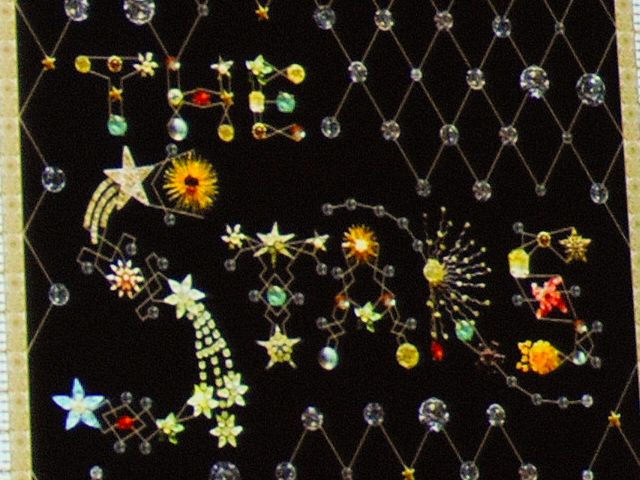
Next was a piece about the plethora of low-tech movable type signage in her hometown.
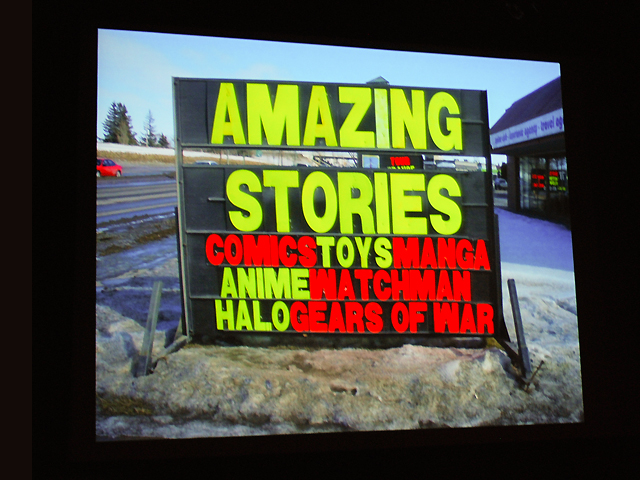
Marian wanted people to experience the overwhelming abundance of the black, yellow, fluorescent orange signage. “It’s total visual overload, [but] the content hangs together as a unit,” she explained.
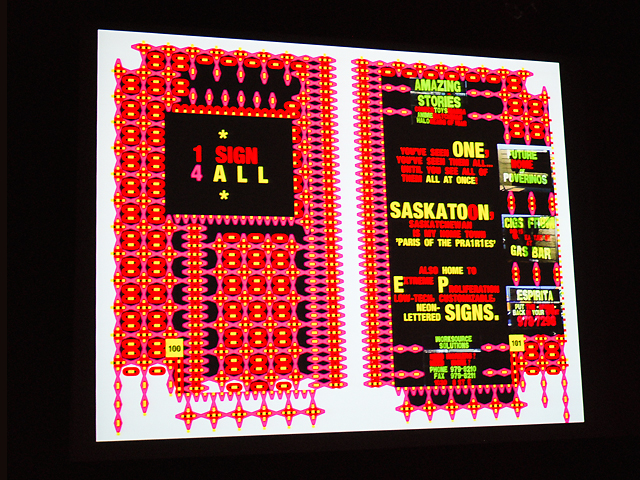
In addition to editorial pieces, Marian also wrote about her thoughts on wonder, religion, and persuasion.
The most difficult part was writing a chapter on wonder. Working in her living room, she obsessively researched wonder and discovered many interesting facts. The challenge was to balance out research and academic facts with her own personal voice and conversational writing style. “In the end I cut all the interesting facts that I discovered in order to get the whole thing under control and make it mine,” she said.
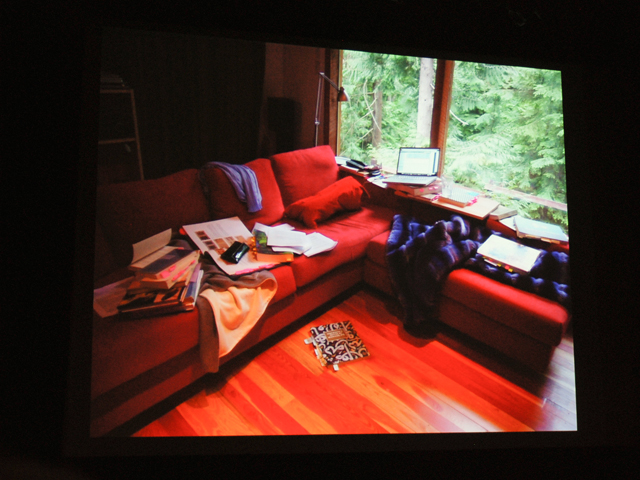
To balance the philosophical musings and quirky articles, Marian added personal articles to the book. Fascinated with portraits, she recreated her own family albums, particularly her mother’s past through the lens of the future, and what those photos would mean to possible future generations.
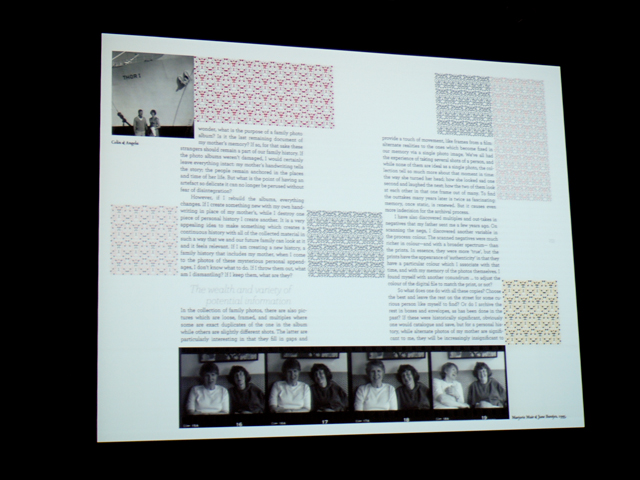
The other personal piece was directly about her mother. A secretary in her early days, Marian’s mother kept to-do lists in steno notebooks. Some of the notes were written in shorthand, and others were written by Marian and her two brothers when they were children. Marian recalls that after her mother’s passing, “my brothers took her academic notes, journals and recipes, but I took Mama’s brains.” The notes were meaningful because so much of her mother’s personality, likes and dislikes, habits and humor came through from her to-do lists.
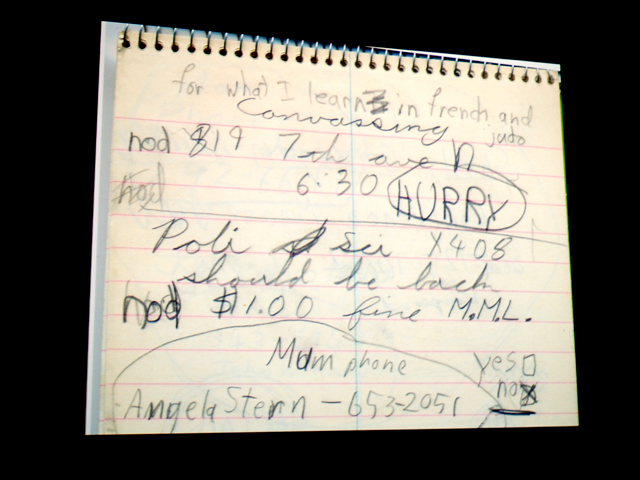
So the last spread in the book is dedicated to her mother. The pages are turned inside-out: the imagery is her mother’s handwriting, and Marian’s commentary and notations are in the margins.
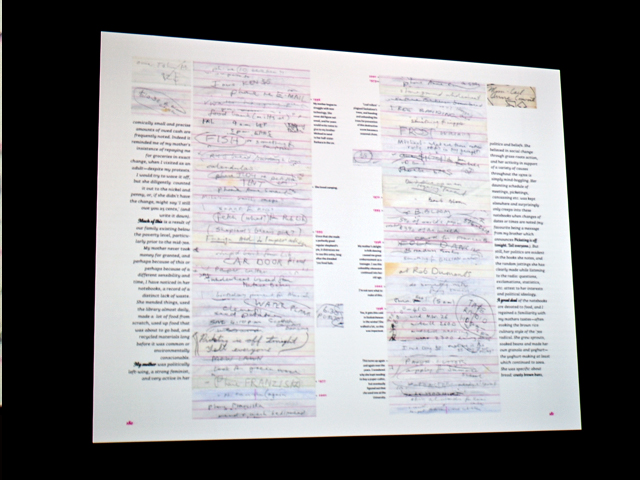
Marian ended the presentation with final thoughts on I Wonder, “it’s eclectic, yet to my amazement, these things of honor, secrets, wonder, memory kept turning out like threads running through the book. I’m really happy how it turned out. I hope you enjoy it and read it.”
The presentation concluded with an audience Q&A.
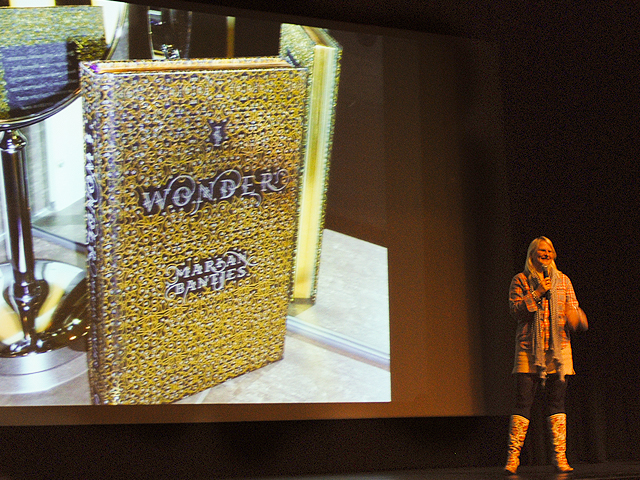
For more information, visit
Marian Bantjes http://www.bantjes.com
Additional information on I Wonder http://www.bantjes.com/i-wonder/about-book
Order I Wonder on Amazon http://www.amazon.com/I-Wonder-Marian-Bantjes/dp/1580932967/ref=sr_1_1?ie=UTF8&s=books&qid=1270152758&sr=8-1
Paula Scher http://www.pentagram.com/en/partners/paula-scher.php
To view event details, visit
AIGA/NY Marian Bantjes, I Wonder. Introduction by Paula Scher http://2006.aigany.org/events/details/11MB/
To view additional photos, please visit our Flickr photostream. We encourage our members to contribute their photos to the AIGA New York Flickr group.